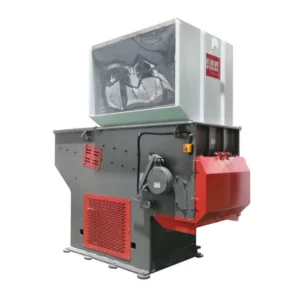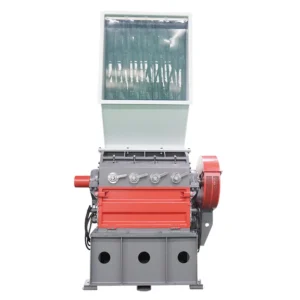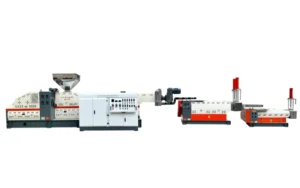We’ve all seen it—the overflowing bins, the floating bottles in rivers, and the plastic bags tangled in trees. It’s depressing, isn’t it? The plastic problem is suffocating ecosystems, clogging oceans, and even sneaking into the food chain. Ignoring it doesn’t make it disappear. The frustration grows when people think recycling is optional, not essential. That’s exactly why I dedicate my life and machines to fighting this battle—one crushed bottle at a time.
Plastic recycling by a plastic shredder, a plastic crusher,a plastsic washing line or a plastic pelletizer is critical because it reduces pollution, saves energy, conserves resources, and prevents plastics from choking our landfills and oceans. By recycling, we turn waste into usable raw materials, reducing the demand for virgin plastics and cutting greenhouse gas emissions. In short, recycling isn’t just eco-friendly—it’s one of the most powerful tools we have for protecting our environment.
And trust me, once you understand the real impact, you’ll never look at a plastic bottle the same way again.

How does plastic recycling reduce pollution?
Plastics don’t just disappear. They take hundreds of years to decompose. Left unchecked, they break down into microplastics, which enter soils, rivers, and oceans. That’s bad news for fish, birds, and even humans.
When we recycle plastics by a plastic shredder, we stop them from ending up in nature. According to environmental pollution data, recycling reduces plastic leakage into oceans by up to 60%. That’s fewer turtles strangled by bags and fewer whales with stomachs full of bottles.
How does recycling save energy and resources?
Producing new plastic is resource-hungry. You need petroleum, natural gas, and lots of energy. Virgin plastic is expensive—both financially and environmentally.
Recycling flips the script. Studies show that recycling plastics by a plastic shredder or a plastic crusher saves up to 70% of the energy compared to producing new ones. Think about it: one ton of recycled plastic saves nearly 3,000 liters of oil. That’s like skipping hundreds of road trips in a gas-guzzler.
How does recycling fight climate change?
Burning plastic releases CO₂ and other nasty gases. Landfilling plastics creates methane, another greenhouse villain. Recycling, on the other hand, dramatically reduces emissions.
According to climate impact reports, recycling one ton of plastic can cut carbon dioxide emissions by nearly two tons. That’s a big deal when cities are scrambling to meet climate targets. And it’s one reason I like to call my plastic shredders “carbon crushers.”
What role does recycling play in a circular economy?
The circular economy is all about keeping materials in use as long as possible. Recycling plastic by a plastic crusher is the backbone of this model. Instead of one-and-done use, plastics get reborn into bottles, textiles, packaging, or even furniture.
According to circular economy models, countries with strong recycling infrastructure reduce their overall plastic waste by 45%. That’s not just good for the planet—it’s also good business. Waste becomes raw material, and raw material equals opportunity.

Can recycling really protect biodiversity?
Yes—and in ways you might not expect. Plastic waste kills over a million seabirds and 100,000 marine animals every year. They ingest or get entangled in it. Recycling stops that flow of plastic into their habitats.
Wildlife protection studies show that improved recycling systems reduce coastal waste and directly improve marine biodiversity. I’ve visited beaches after community recycling projects—what was once a plastic graveyard became a nesting ground for turtles. That’s the kind of magic I live for.
What challenges still exist in plastic recycling?
It’s not all sunshine and rainbows. Contamination is a big problem. Food residue, mixed materials, and non-recyclables lower efficiency. Advanced sorting systems help, but they’re expensive.
There’s also the issue of demand. Not every manufacturer is eager to use recycled plastics. But according to market demand reports, this is changing, with demand for recycled materials growing 10% annually. With the right incentives, recycling by a plastic shredder can move from an afterthought to a mainstream supply chain.
How do I see the future of plastic recycling?
I see smarter systems—AI-powered sorting, chemical recycling breakthroughs, and city-wide collection networks. The future of recycling isn’t just bins and trucks—it’s sensors, robots, and data-driven efficiency.
And of course, I see a cultural shift. Recycling won’t just be a “good deed.” It will be the norm, woven into smart city planning and industrial design. Innovation forecasts suggest that by 2040, half of all plastics could come from recycled sources. That’s not just hopeful—it’s achievable.

Conclusion
Plastic recycling by a plastic shredder or a plastic crusher is more than just a green habit. It’s pollution prevention, energy saving, climate action, biodiversity protection, and economic innovation—all rolled into one. And yes, it’s absolutely essential.

